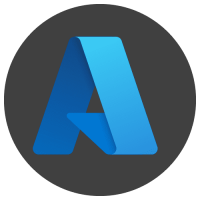Huom! Kurssi on modulaarinen ja syksyn toteutukset jakautuvat seuraavasti kahdeksaan eri moduliin:
Ensimmäinen toteutus:
• 3.9.2025 klo 13-16
• 4.9.2025 klo 13-16
• 10.9.2025 klo 13-16
• 11.9.2025 klo 13-16
• 16.9.2025 klo 13-16
• 17.9.2025 klo 13-16
• 23.9.2025 klo 13-16
• 24.9.2025 klo 13-16
Toinen toteutus:
• 28.10.2025 klo 13-16
• 30.10.2025 klo 13-16
• 4.11.2025 klo 13-16
• 6.11.2025 klo 13-16
• 11.11.2025 klo 13-16
• 13.11.2025 klo 13-16
• 18.11.2025 klo 13-16
• 20.11.2025 klo 13-16
Kurssilla opit miten dataa ja tiedostoja data lake -ratkaisussa käsitellään. Luetaan datat käyttäen Apache Spark, Azure Synapse ja Azure Databricks.
Datan transformointiin sovelletaan samat palvelut kuin sen lukemiseen, sekä luodaan Azure Data Factory ja Synapse työnkulkuja.
Lopuksi katsomme miten voidaan monitoroida ja turvata Azuressa olevia ratkaisuja. Opitaan miten voidaan havaita suorituskyvyn liittyviä ongelma, ja mitkä ovat parhaat käytännöt rakentaessa tietoturvallisia dataratkaisuja.
Koulutus valmentaa Microsoftin viralliseen DP-203 Data Engineering on Microsoft Azure -sertifiontitestiin.
Kurssin esitietovaatimus
Esitietoina osallistujien olisi hyvä osata SQL:n ja Pythonin perusteet, sekä omata Azuren käyttökokemusta.
Kurssin kohderyhmä
Koulutus on suunnattu Data Platform -asiantuntijoille, arkkitehdeille, BI-asiantuntijoille ja kaikille, joiden tulee osata Azure Data Platform -tekniikat.
Tietoa koulutuksista
Luokkakoulutukset
Corellian koulutustiloissa:
Kalevankatu 9 A, Helsinki
Kiinnostaako asiakaskohtainen toteutus? Meillä onnistuu.

